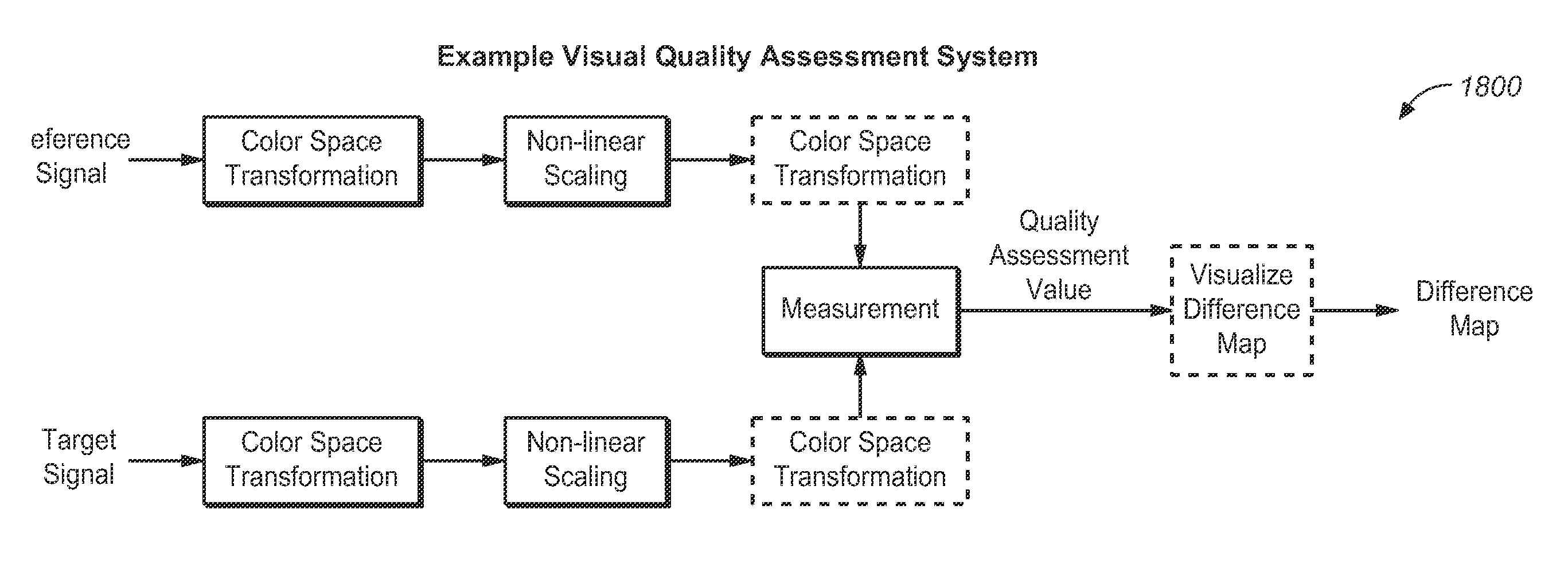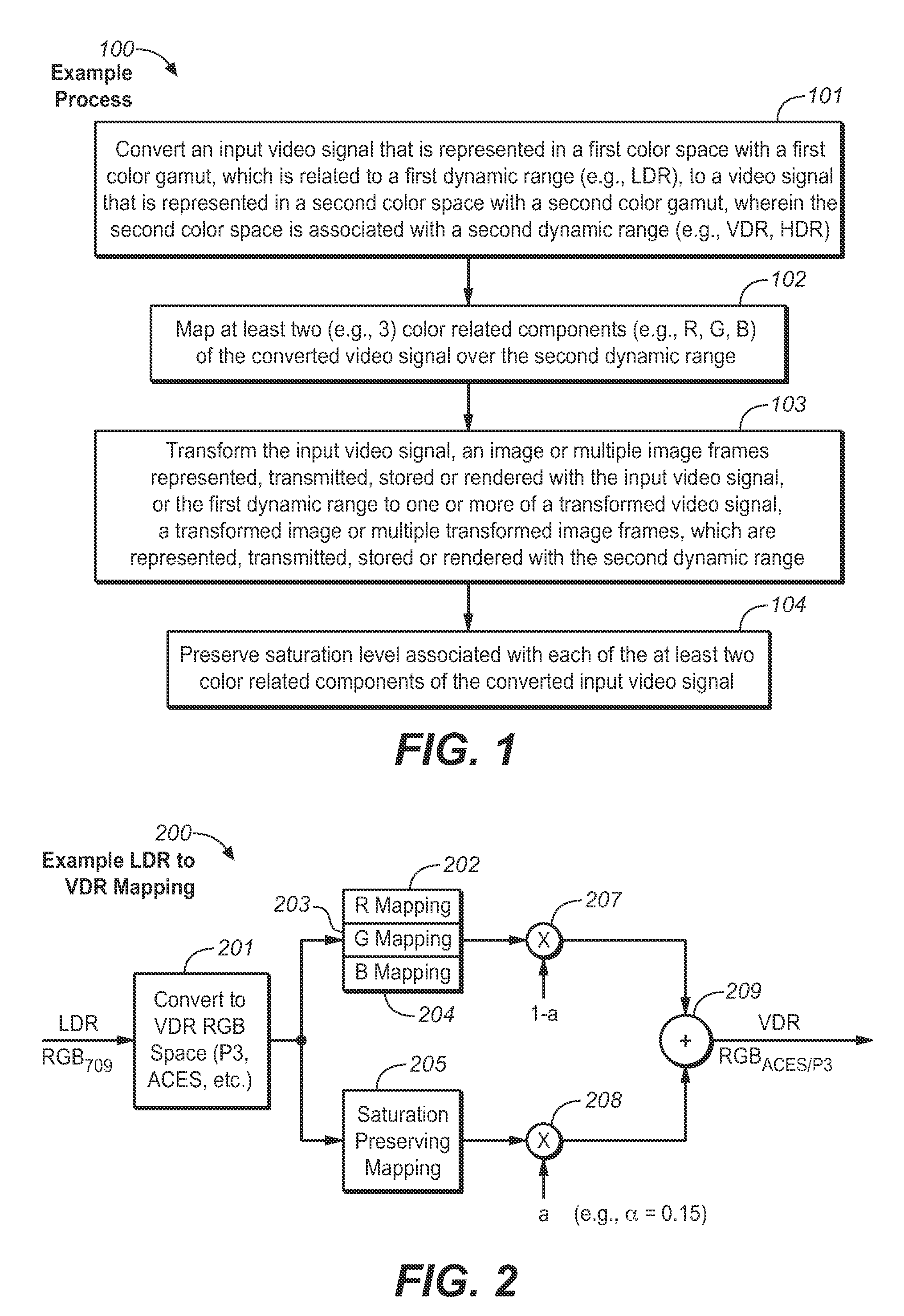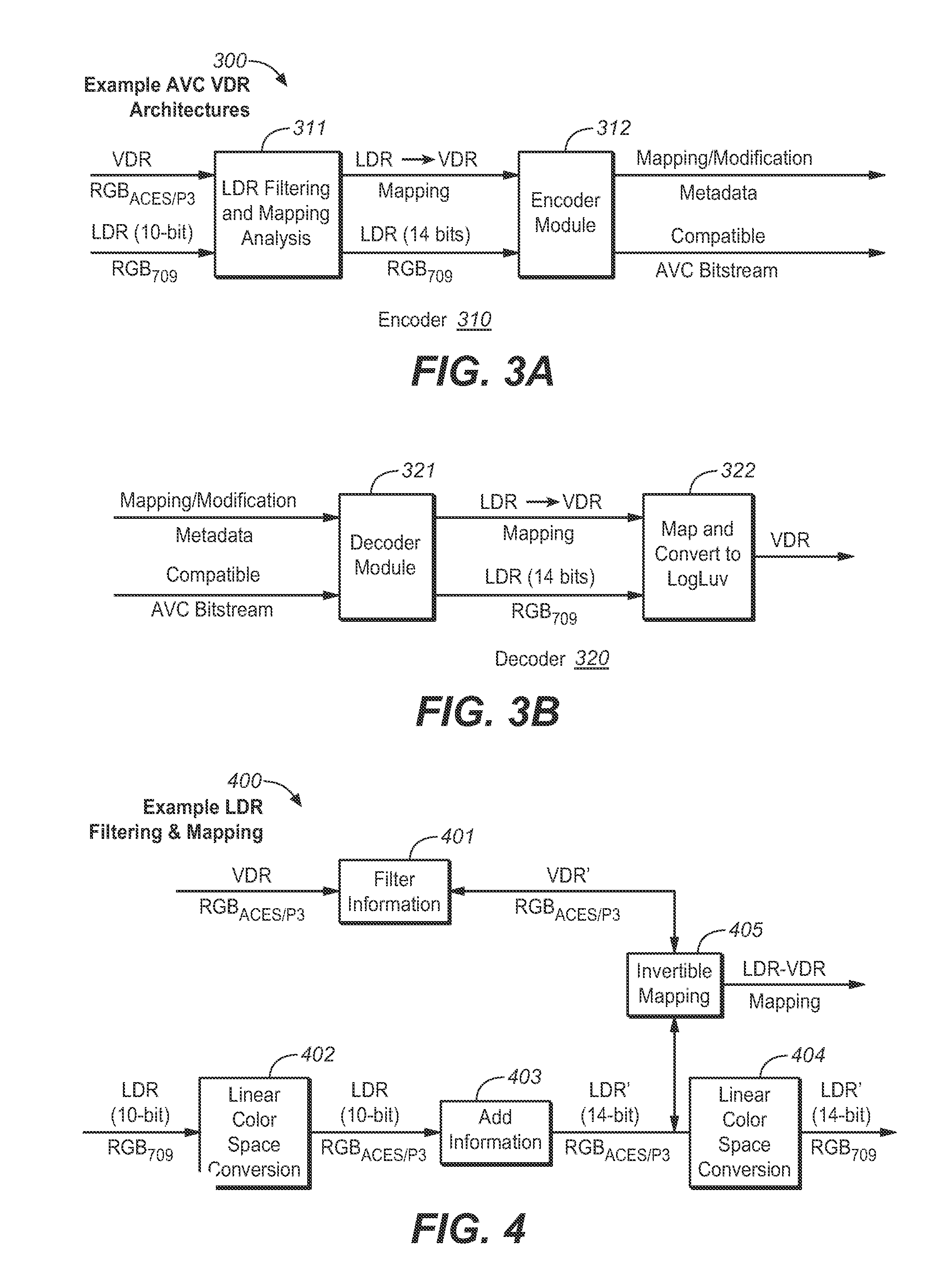Quality assessment for images that have extended dynamic ranges or wide color gamuts
a dynamic range and image technology, applied in the field of image quality assessment, can solve the problems of encoding hdr, sdr images may not suffice for all purposes, and may be somewhat computationally expensive and/or bandwidth consumptiv
- Summary
- Abstract
- Description
- Claims
- Application Information
AI Technical Summary
Benefits of technology
Problems solved by technology
Method used
Image
Examples
example process
[0046
[0047]An embodiment relates to a process for enhancing image dynamic range. FIG. 1 depicts a flowchart for an example process 100, according to an embodiment of the present invention. An embodiment converts 101 an input video signal that is represented in a first color space with a first color gamut, which is related to a first dynamic range, to a video signal that is represented in a second color space with a second color gamut. The second color space is associated with a second dynamic range. At least two color-related components of the converted video signal are mapped 102 over the second dynamic range.
[0048]The second dynamic range may be greater (e.g., may span a wider, broader or deeper range) than the first dynamic range. The second dynamic range, on an intra-frame basis in relation to the video signal, may span or approximate a range of color and / or intensity that may be simultaneously perceivable by the normal human visual system (HVS). As used herein in this sense, th...
example architecture
[0066
[0067]FIG. 3A and FIG. 3B depict an example VDR architecture 300, according to an embodiment of the present invention. VDR architecture 300 includes an encoder 310 and a decoder 320. Encoder 310 includes a SDR filtering and mapping analysis 311 and encoder module 312. SDR filtering and mapping analysis 311 receives an input that includes wide gamut color space information (e.g., ACES and / or P3) and SDR content with, e.g., a 10-bit or lower bit depth. The SDR content also has relatively smaller gamut color space information (e.g., ITU BT.709). SDR filtering and mapping analysis 311 provides an intermediate output to encoder module 312.
[0068]The intermediate output includes a mapping between the low DR (SDR) and the extended DR (VDR) and a high precision (e.g., 14-bit bit depth) version of the SDR content. From the intermediate output of SDR filtering and mapping analysis 311, the encoder module 312 generates an output for export, which includes a compatible advanced video codec ...
example embodiments
[0136
[0137]An example embodiment of the present invention assesses a visual difference between a first image and / or video signal and a second image and / or video signal, each of which have a high dynamic range (HDR) or a visual dynamic range (VDR), and / or a wide color gamut (WCG). The image and / or video signals are processed and assessed. The output of the assessment is provided in the form of a numerical result or a difference map where the levels of the differences between the first and second image and video signals are marked. In an example embodiment, the HDR, VDR and WCG image and video signals are processed to account for perceptual non-uniformity. In an example embodiment, a visual difference between the processed signals is measured. In an example embodiment, an assessment outcome is generated as an output. The assessment outcome output may be in the form of numerical results and / or a difference map, in which levels of the differences between the first and the second image a...
PUM
 Login to View More
Login to View More Abstract
Description
Claims
Application Information
 Login to View More
Login to View More - R&D
- Intellectual Property
- Life Sciences
- Materials
- Tech Scout
- Unparalleled Data Quality
- Higher Quality Content
- 60% Fewer Hallucinations
Browse by: Latest US Patents, China's latest patents, Technical Efficacy Thesaurus, Application Domain, Technology Topic, Popular Technical Reports.
© 2025 PatSnap. All rights reserved.Legal|Privacy policy|Modern Slavery Act Transparency Statement|Sitemap|About US| Contact US: help@patsnap.com



